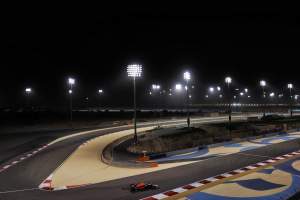Up Next

Seeing Formula 1 cars in person is a completely different experience to watching them on television or studying photographs.
While you can learn plenty from afar, up close they become living, breathing beasts with their own recognisable characteristics. The two-dimensional becomes three-dimensional.
Regardless of the stopwatch, the poise of the Red Bull RB16B on track screamed class of the field
In the times of COVID-19 with access restricted, it’s been difficult for journalists to get trackside in suitable places to get to know the cars, but Bahrain testing did offer the chance to get up close and personal with the 2021 machines.
Bahrain’s Turn 11, the uphill left-hander at the end of the back straight, is a favourite vantage point. It’s taken in fourth gear and requires a good front end, while the long exit is a test of the traction of the car as drivers feed in the power.
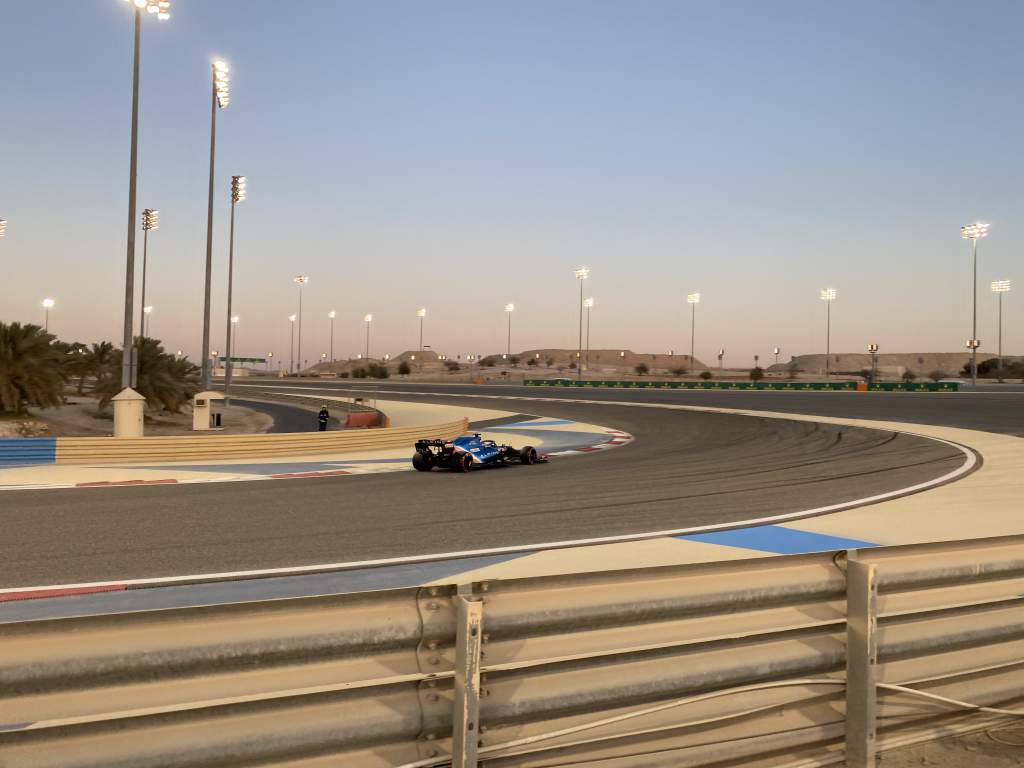
Watching during the final afternoon, with the temperature dropping as the sun goes down and the floodlights firing up at 5pm to take over illumination duties, the fast laps really started to come.
The most impressive car is the Red Bull. That isn’t a surprise, but just how good it looks in the hands of Max Verstappen is startling.
He is able to turn in with absolute commitment and carry the speed into the apex, but most breathtakingly he can get on the power decisively earlier than anyone – seemingly without a hint of wheelspin.

Last year’s Red Bull was tricky to master and Verstappen did so brilliantly. But as Lewis Hamilton said earlier in the day, Red Bull is a different beast this year and Verstappen looks completely at one with it. Regardless of the stopwatch, the poise of the Red Bull RB16B on track screamed class of the field.
But there is a caveat in the form of Mercedes. In Hamilton’s hands, the Mercedes is relatively subdued and it’s some time before he appears remotely interested in attacking on turn in.
Then as he picks up the pace, the car’s limitations did appear to show. It’s clear Hamilton isn’t turning in as decisively as Verstappen, but how much of that is the fact he doesn’t need to given this is testing and how much is down to the rear-end instability is difficult to be sure of.
Most likely, it’s a little of both. Hamilton never commits to the corner like Verstappen, but he is pushing and the contrast on traction is also clear. While the Red Bull is planted, the Mercedes squirms in the corner exit as Hamilton feeds in.
Remember, one of the areas where the new aerodynamic regulations can hurt is in terms of traction and that supports the suggestion that the Mercedes rear end is the issue. This was a strength of the car last year but it could be hurting in all phases of the corner in 2021.
This is definitely not the Mercedes W12 either at its lightest or driven at its hardest, so it’s not a like-for-like comparison with the Red Bull. But it is lacking compared to the Red Bull.
The question is, how much and will it be resolved by the time qualifying gets under way for the first race of the season in Bahrain when we get the first completely representative lap times?
If the body language of Ricciardo’s McLaren is decisive, Sainz’s Ferrari is a little tentative
The ace in the midfield pack is the McLaren. Daniel Ricciardo appears confident under braking and in corner entry. While plenty of drivers have moments, the McLaren rolls serenely through. For a car that was a little sensitive to the wind last year, that’s an encouraging development.
Overall, the Mercedes-engined MCL35M is a step behind the Red Bull in terms of catching the eye, but it responds to Ricciardo and giving him the balance he needs to carry the speed into the apex without struggling to rotate the car.
But the driver who gave up that car to switch to Ferrari, Carlos Sainz Jr, isn’t having such a good time.
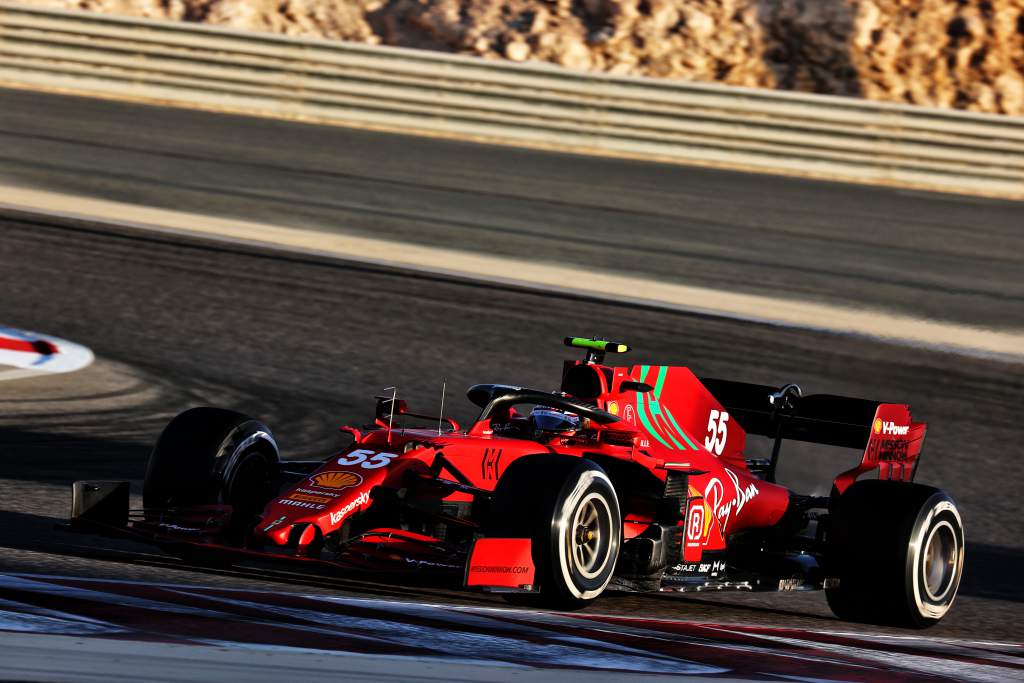
In his early laps, while on a race simulation, he struggles on entry, a little hesitant at corner entry one lap, then the next less so but under-rotated mid-corner and therefore still working to get round the corner when he should be getting on the power.
For a team that really should be third fastest, this is disappointing. Later, things do improve for Sainz as the crosswind disappears and he’s able to be more consistent, but if the body language of Ricciardo’s McLaren is decisive, the Ferrari is a little tentative. While it’s not slow or all over the place, it’s just not quite together.
The Aston Martin, in the hands of Sebastian Vettel, is also underwhelming. It looks subdued, rolling into the corner and occasionally running a little deep, and doing little to catch the eye. It’s a little Mercedes-like, potentially indicating that the lower-rake cars are struggling more with the new aerodynamic rules.
But a turbocharger problem means that he’s soon stuck in the garage rather than doing performance runs, so it never really shows its true colours. Judgement has to be reserved.
It is possible to be more decisive about the AlphaTauri AT02. In the hands of the over-exuberant Yuki Tsunoda, it looks genuinely good.
It’s well-balanced balanced, forgiving enough for the driver to adjust if needed and with that combination of positive turn-in, apex speed and traction, it looks every bit a Q3 car.
And while Tsunoda’s peak pace suggests he is running in qualifying trim, what is most impressive about the car is its consistency.
It looks good on its race run, it looks good on performance runs and in anything in between. Along with the McLaren, it’s the most impressive of the midfield group.
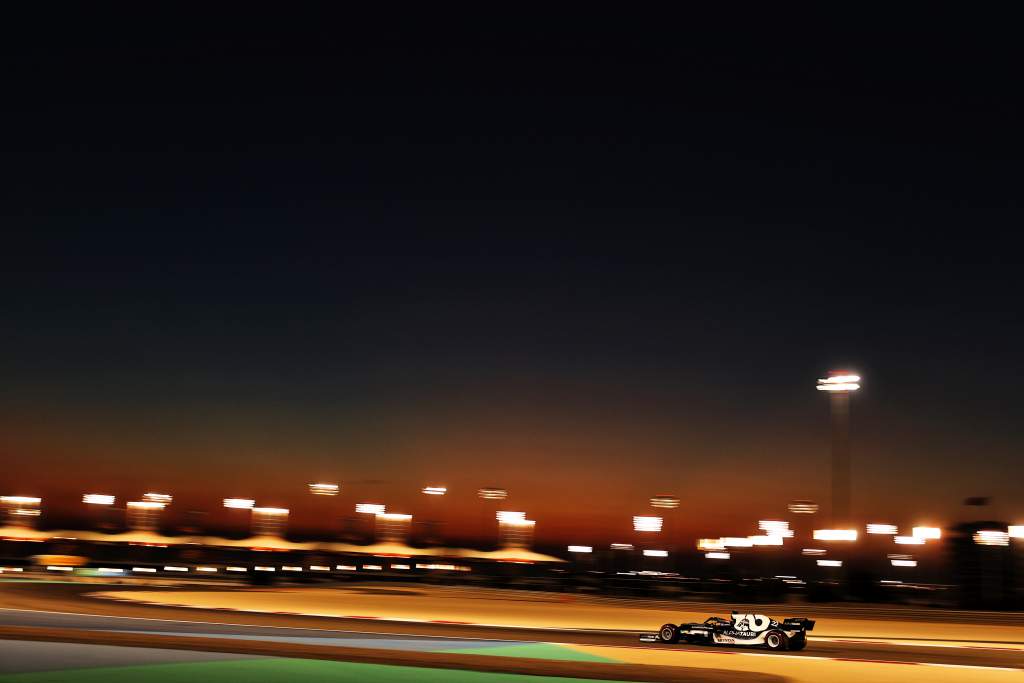
A very welcome sight is witnessing Alpine driver Fernando Alonso behind the wheel of a Formula 1 car, the first time from trackside since the 2018 Abu Dhabi Grand Prix.
Anyone suspecting he might have lost his edge or be struggling thanks to the injuries from his cycling accident would be disabused of that notion the moment he first appears on a push lap.
The familiar commitment on turn in is there, loading up the car decisively in the knowledge he can sort out any problems that manifest themselves subsequently. But the Alpine isn’t causing him any significant difficulties.
“These conditions have just highlighted and brought out the worst of the car, which in some aspects is good” :: George Russell
The Alfa Romeo is also brisk in the hands of Kimi Raikkonen. On race runs, it looks like a very well-balanced car,, but as the fuel comes out and the softest compounds go on, the you just start to see the limitation on turn in as Raikkonen attempts to get it perfectly set up for the corner.
While the most impressive cars can load up the rear laterally in one movement, Raikkonen has to be very slightly hesitant to avoid losing control of the rotation. But it’s only a subtle effect, noticeable simply because it wasn’t there when on more conservative race runs.
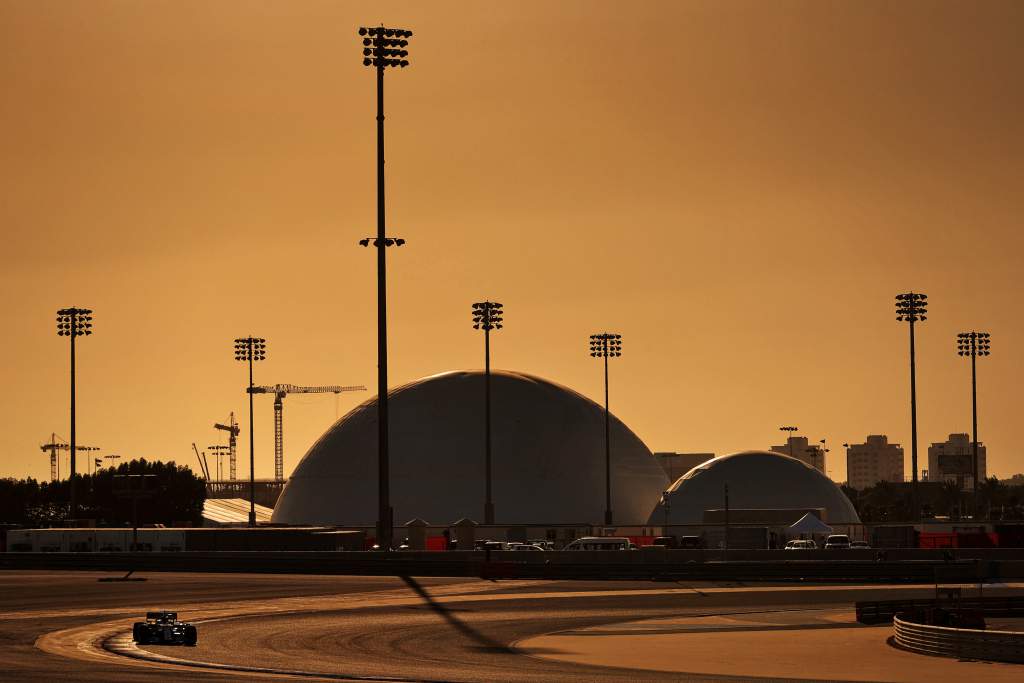
The Williams is the most difficult car to get a handle on given George Russell appears to be going through a series of modifications to his approach to the corner. It’s not unusual for a driver to do this, but not to this extent even in testing. Often, this adds up to significant differences mid-corner in terms of the car’s balance and poise.
After the session, I ask him if he was changing his approach from lap to lap, as he appeared to be, or if I was imagining it. It proved to be the latter in terms of his inputs, but instead it reflected the impact on the car of the wind.
“I think you’re imaging it, to be honest,” he said. “It only took a small gust or a slight change of direction for the balance and the feeling to be quite drastically different.
“We knew this would be the case and these conditions have just highlighted and brought out the worst of the car, which in some aspects is good, because that’s given us a good data set to go at.”
With Russell focusing on race runs during this phase, the car was far more consistent later on once the wind shifted away from a more problematic crosswind.
All the cars struggled with the wind to some extent, but given the gustiness had dropped as the three days progressed to the point where it felt like little more than a breeze from outside the car, it’s a reminder of how sensitive these cars really are.

With little expected of the Haas, the main interest is the progress of its rookie drivers. Nikita Mazepin, at the wheel for the afternoon session, is committed but perhaps a little too much so.
Generally, he appears to leave too much of the rotation too late, meaning that the exit is compromised and costing time. But with slightly more restrained corner entry, it will come.
All of this is just a snapshot, a few hours of running at one corner with varying fuel loads, tyre compounds and levels of driver commitment.
But it at least offers the chance to start to get to the know the cars and build up a picture of who has the most work to do.
The first impression of the F1 2021 crop is that Red Bull might finally have produced a car that is working well at the start of the season.
Mercedes is unquestionably faster than it appears as the car never looked as close to the livewire edge as the Red Bull did at times, but where it really stands is difficult to judge. All we can be sure of is that there is work to be done.
History suggests Mercedes will be ahead come the Bahrain GP weekend regardless. But seeing how good the RB16B looked on track, there is at least the hope of a genuine fight in the offing – which is exactly what any neutral F1 enthusiast will hope to see.






